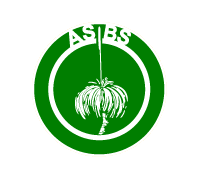
ASBS Newsletter 96, September 1998
Eichler Award
Six applications were received for the 1998 Hansjorg Eichler Research Awards, and the successful applicant(s) will be announced at the Annual General Meeting in Sydney. A reminder that application forms and information about the yearly awards can be found on our ever improving website.
We are closer to tax deductibility and John Clarkson is ironing out the final wrinkles as I type. Hopefully an announcement about this can also be made at the AGM. Please remember the Hansjorg Eichler Research Fund if you wish to donate money to the society and, in particular, want to help our newer plant systematists to achieve their research goals.
ABRS
Senator Hill has again topped up the ABRS budget with an extra $1.2 million (as he did last year), and the allocation for the grants program will be more than last year's $1.2 billion. It seems likely that the Advisory Committee will play a greater role in setting directions for ABRS and I look forward to working with the new Chair, Hugh Possingham. It is hard to measure the importance of letters and meetings with the Senator, but I think "the three Presidents" have contributed to the positive outcome. While this is good news we still need to make this "topping-up" amount part of the core budget, and to lobby for a substantial increase in ABRS's total budget as recommended in the recent review (see my last report).
There is also still work to be done to make sure that all parts of systematics are funded. Somewhere between molecular systematics and Flora writing there is a big black hole that sucks in a large proportion of our ABRS and ARC applications. Of course we have to be creative and find ways of avoiding this black hole, but granting bodies must also collaborate to reduce the size of this hole: some high quality projects appear not to be funded because each granting body thinks the other should fund it.
National Priorities
With my impending move to the Royal Botanic Gardens Sydney, I have started thinking more about how we (in particular herbaria) can make the best use of our limited systematics resources in Australia. By resources, I mean people. Should each herbarium have a full set of systematists, covering all plant-like organisms from fungi to phanerogams? Should herbaria duplicate (taxonomically) the universities: e.g. if there is a surplus of phycologists in town, does the State herbarium need one? Can State-funded herbaria, universities and other research institutions collaborate to the extent that national priorities can be set?
Obviously few herbaria could hope to have anything like a full house of plant systematists, even if they wanted it. Perhaps the taxonomic coverage is not as important as making sure you have a full suite of skills (e.g. local flora, phylogeny and biogeography, molecular systematics, vegetation mapping, ecology / conservation etc.). I think the final question above is the most important in the short-term. One way of categorising the systematics research in State herbaria is to break it into two hunks, one oriented towards the State, the other towards national and international goals. Clearly these two groups overlap and feed into one another, but the latter hunk is the one which has been occupying my thoughts. It includes taxa that overlap State boundaries, national conservation listings, the origins and endemism of Australia's species, and so on. It seems ineffective and inefficient to set priorities in these areas on a State-to-State basis. MAybe it is the only way it can be done, but I'd like to think that groups like CHAH could work at ways of consolidating our national efforts.
One benefit would be to send clear signals to newly emerging systematists about what they could study. Some people have a passion about a particular group of organisms and they need to stick with it, others have a passion about systematics and the group is largely unimportant. For the latter we should be able to provide guidance that meets national priorities as well as points them in the right direction for funding and jobs.
It may be that a well argued set of national priorities will allow herbaria to better adapt to changing economic and social demands. As we all know, it is easier to explain to a State parliamentarian why we discover and documant the State's flora than it is to explain we study a group of organisms that might have its greatest diversity in another part of Australia or even outside the country. Equally we all know why we study such groups. Some of these reasons will convince a parliamentarian and others won't. I think an agreed set of national priorities, including a demonstration of how information from one State benefits another, would be convincing. Or am I wrong?
IAPT
There is currently (mid-August) a debate raging over the nomination and election process for councillors and office bearers in the International Association for Plant Taxonomy. Further information can be found elsewhere in this newsletter, and the TAXACOM listserver has carried some of the debate. I have responded constructively to both Vicki Funk and Wenier Greuter on behalf of ASBS. In essence I have called for open elections and a transparent nomination process, allowing members to demonstrate through the election process what they want for the society. There has been a great deal of aggressiveness, ill-feeling and personal attack in this debate, to which I have not willingly contributed.
Tim Entwisle